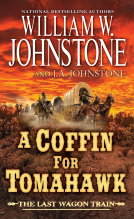
First to Fight
The U.S. Marines in World War I
by Oscar E. Gilbert, Romain Cansiere
This title was previously available on NetGalley and is now archived.
Send NetGalley books directly to your Kindle or Kindle app
1
To read on a Kindle or Kindle app, please add kindle@netgalley.com as an approved email address to receive files in your Amazon account. Click here for step-by-step instructions.
2
Also find your Kindle email address within your Amazon account, and enter it here.
Pub Date Dec 03 2017 | Archive Date Dec 15 2017
Description
• World War I was a crucial time in the history of the USMC, which was transformed from a small organization of naval security detachments and "colonial infantry” to an elite land combat force
• 1918 marks the centenary of Belleau Wood, the best known United States Marine Corps action of World War I
• Based upon a range of sources, including French archival materials, this is a uniquely balanced account of Marine units and the units that supported them in World War I
“Retreat, hell! We just got here!” The words of Captain Lloyd Williams at Belleau Wood in June 1918 entered United States Marine Corps legend, and the Marine Brigade’s actions there—along with the censor’s failure to take out the name of the Brigade in the battle reports—made the Corps famous.
The Marines went to war as part of the American Expeditionary Force, bitterly resented by the Army and General Pershing. The Army tried to use them solely as labor troops and replacements, but the German spring offensive of 1918 forced the issue. The French begged Pershing to commit his partially trained men, and two untested American divisions, supported by British and French units, were thrown into the path of five German divisions. Three horrific weeks later, the Marines held the entirety of Belleau Wood. The Marines then fought in the almost forgotten Blanc Mont Ridge Offensive in October, as well as in every well-known AEF action until the end of the war.
This book will look at all the operations of the Marine Corps in World War I, cover the activities of both ground and air units, and consider the units that supported the Marine Brigade. It will examine how, during the war years, the Marine Corps changed from a small organization of naval security detachments to an elite land combat force.
A Note From the Publisher
PLEASE NOTE: *THIS IS A PDF FILE ONLY* This is not a Kindle file. We do not offer Kindle files for free download; this book is available for free download as a PDF and as such may not work with all Kindle devices.
Marketing Plan
• National review & feature attention.
• Online media & promotion.
• Available on NetGalley.
• Catalog and website advertising.
• Sales presentations to all major chain stores, select local bookstores, national catalog, booksellers, and book clubs.
Available Editions
| EDITION | Hardcover |
| ISBN | 9781612005089 |
| PRICE | $32.95 (USD) |
Average rating from 5 members
Readers who liked this book also liked:
William W. Johnstone; J.A. Johnstone
General Fiction (Adult), Historical Fiction
Silvia Moreno-Garcia
Historical Fiction, Literary Fiction, Sci Fi & Fantasy
Kyosuke Kamishiro
Comics, Graphic Novels, Manga, Romance, Teens & YA


















